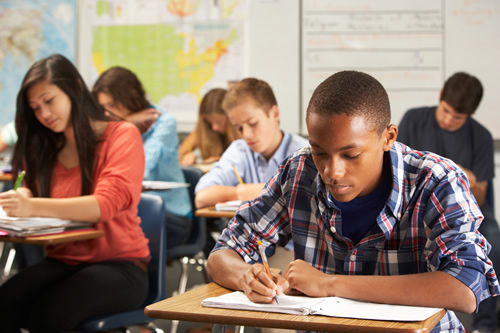16 Mar The Dynamic Landscape of Pupil Communities
In today’s interconnected world, trainee neighborhoods play an essential function in shaping scholastic and individual experiences.
These communities are not just collections of individuals yet are dynamic environments that promote growth, finding out, and collaboration amongst pupils. They differ commonly in kind and feature, from campus-based teams to worldwide on the internet forums, each offering special possibilities for interaction and growth.
Whether you are stepping onto an university school for the first time or taking part in online understanding environments, understanding the structure and advantages of pupil areas can significantly enhance your instructional trip. This post looks into the essence of trainee areas, discovering just how they work, the advantages they supply, and the methods which they can be leveraged for personal and scholastic success.
Comprehending Student Areas
Student neighborhoods are fundamental to the academic experience, serving as both social and educational support systems. At their core, these communities are teams developed naturally by pupils who share usual rate of interests, goals, or disciplines. They can be informal, such as study hall, or formal, like student unions and clubs.
These neighborhoods are defined by a common identification and the cumulative pursuit of expertise, abilities, and experiences. They act as systems for pupils to link, team up, and add to each various other’s growth, expanding beyond academic limits to influence individual development and neighborhood engagement.

Fundamentally, student neighborhoods are microcosms of bigger societal frameworks, where leadership abilities are sharpened, ideas are traded, and long-lasting relationships are formed. The interactions within these communities mirror a diverse blend of cultural, intellectual, and social dynamics.
- Networking Opportunities: Student areas give a network of peers and coaches who can use assistance and advice.
- Ability Development: Engaging in neighborhood activities assists pupils establish crucial skills such as communication, leadership, and teamwork.
- Source Accessibility: These neighborhoods frequently give access to academic sources, including study materials and skilled advice.
- Social Interaction: They provide a system for social interaction, easing the transition right into brand-new academic settings and aiding to combat isolation.
With these different features, pupil areas become essential to the holistic advancement of students, laying a foundation for future professional and personal success.
The Benefits of Participating In Pupil Neighborhoods
The advantages of joining pupil communities are complex, impacting both scholastic and individual spheres.

On a scholastic level, these areas urge joint knowing, enabling trainees to take advantage of diverse point of views and proficiency. Sharing knowledge and resources within an area can bring about much more effective knowing results and boosted academic efficiency.
Additionally, trainee communities provide a platform for individual growth and self-discovery. By involving with peers from different backgrounds and disciplines, pupils gain a more comprehensive worldview, enhancing their social capability and empathy. This direct exposure to varied point of views is important in developing vital thinking and problem-solving abilities.
In addition, energetic participation in neighborhood activities can increase students’ confidence and self-confidence. Handling leadership roles or joining discussions and events fosters a feeling of success and belonging, which is vital for total well-being and motivation.
Kinds Of Trainee Neighborhoods
Student neighborhoods come in various types, each dealing with various interests and objectives. These can be extensively classified right into scholastic, cultural, leisure, and specialist neighborhoods, to name a few. Each type gives one-of-a-kind systems and chances for trainee engagement.
- Academic Communities: These are generally focused around certain fields of study or scholastic rate of interests. Examples consist of study groups, honors cultures, and department clubs.
- Social Areas: These teams focus on promoting social awareness and diversity, frequently organizing occasions and tasks to celebrate various customs.
- Leisure Communities: These consist of sporting activities groups, entertainment clubs, and hobby-based teams that offer a break from academic roughness and promote physical and mental wellness.
- Specialist Neighborhoods: These are aimed at job advancement, providing networking possibilities, workshops, and mentorship programs to prepare pupils for the specialist world.
By recognizing and engaging with the best neighborhoods, students educational q&a platform can customize their college experiences to straighten with their rate of interests and career aspirations, paving the way for a fulfilling academic journey.
Building a Thriving Student Neighborhood
Producing and maintaining a growing pupil community requires initiative and cooperation from both students and educational institutions. It starts with fostering a comprehensive atmosphere where all students really feel invited and valued regardless of their backgrounds.
Establishments can support this by giving resources and centers that encourage communication and engagement. This includes creating physical areas like student unions and on the internet systems that facilitate communication and collaboration. In addition, organizing events, workshops, and seminars can further boost engagement, supplying trainees with possibilities to connect and gain from each other.
Leadership and Pupil Involvement
Efficient leadership is crucial in supporting a successful student area. Leadership functions within these areas supply pupils a chance to establish and demonstrate their business and interpersonal skills. Pupils who think these roles add substantially to establishing the tone and direction of their communities, influencing their peers positively.
Encouraging management and energetic engagement among pupils not only strengthens the neighborhood yet additionally equips people, preparing them for future difficulties. By fostering a culture of partnership and assistance, pupil neighborhoods can prosper, leaving a lasting impact on their members and the academic environment overall.





Sorry, the comment form is closed at this time.